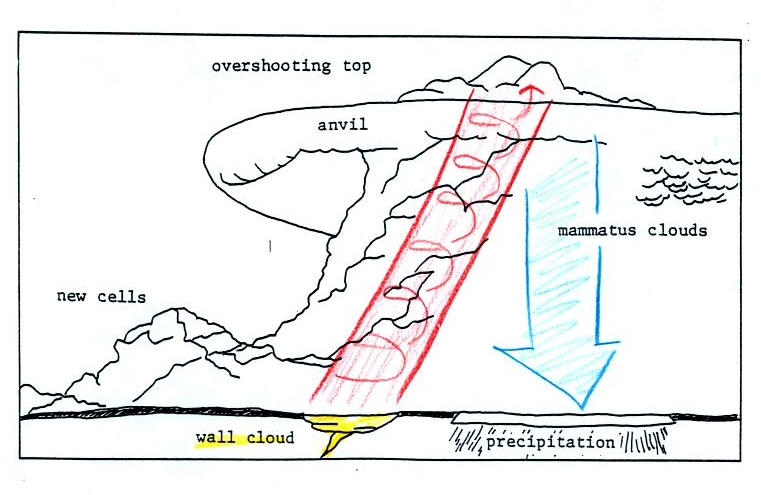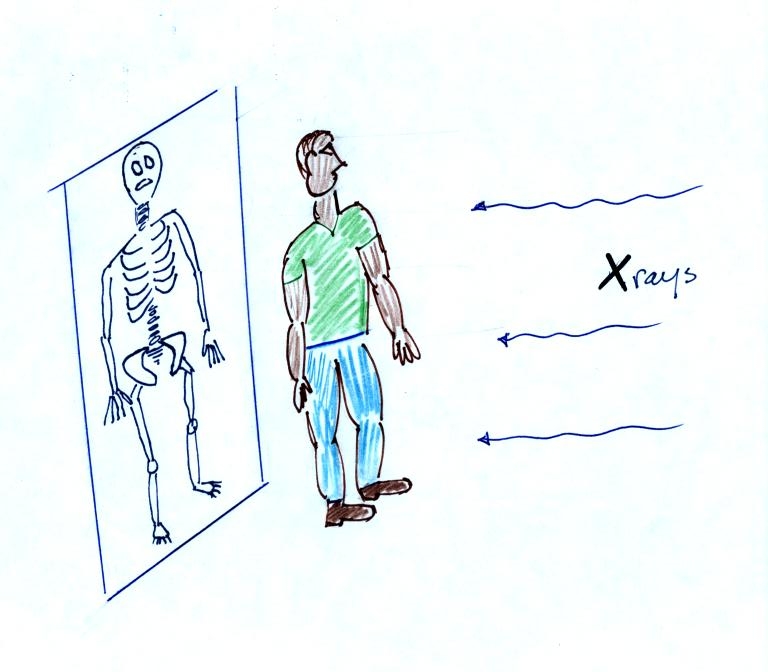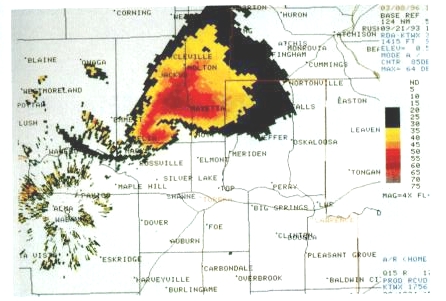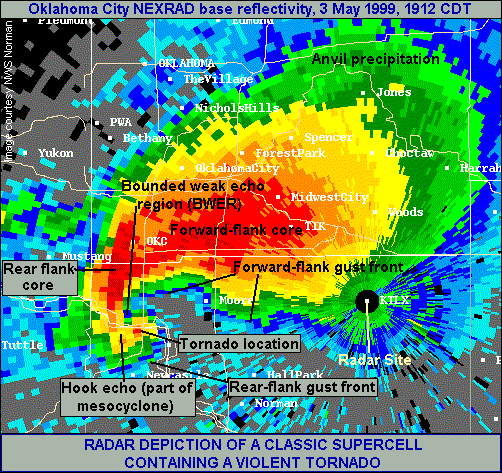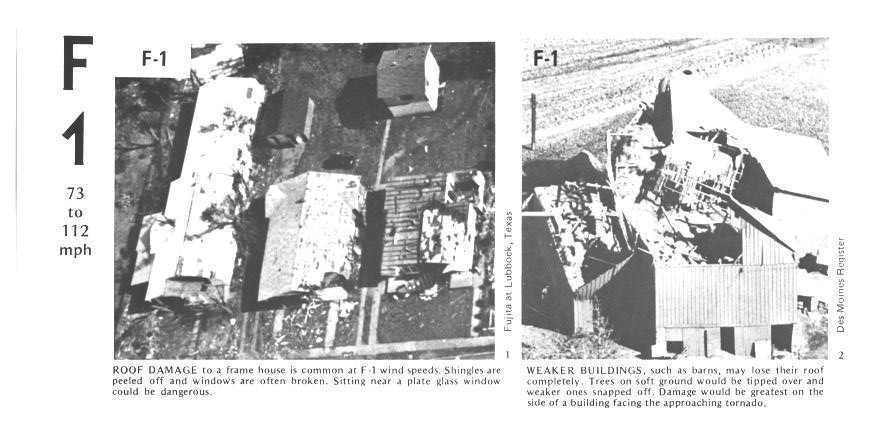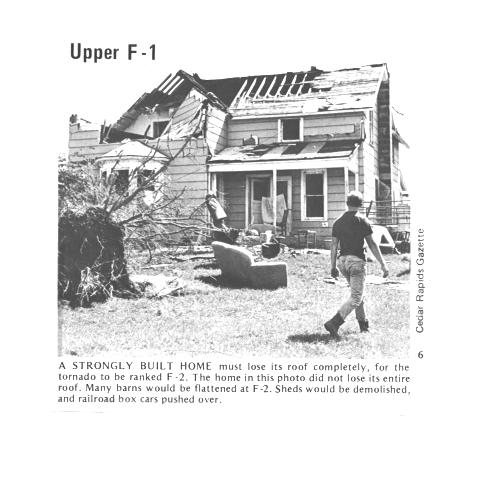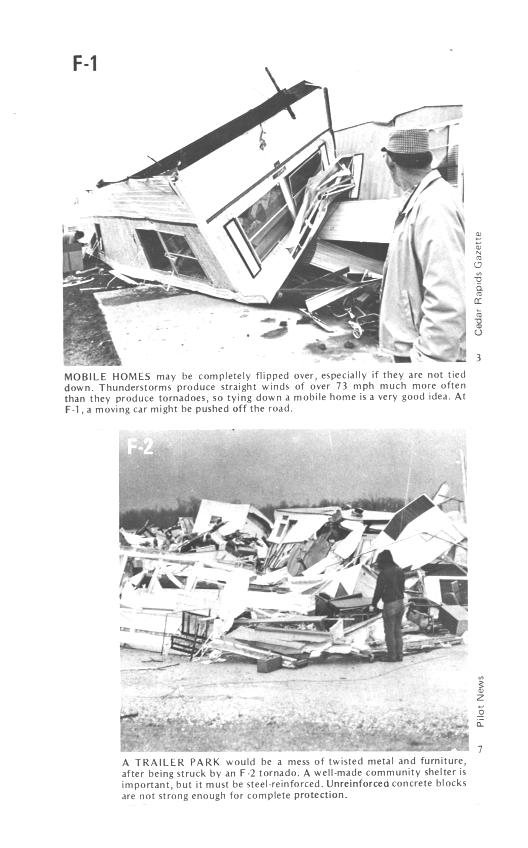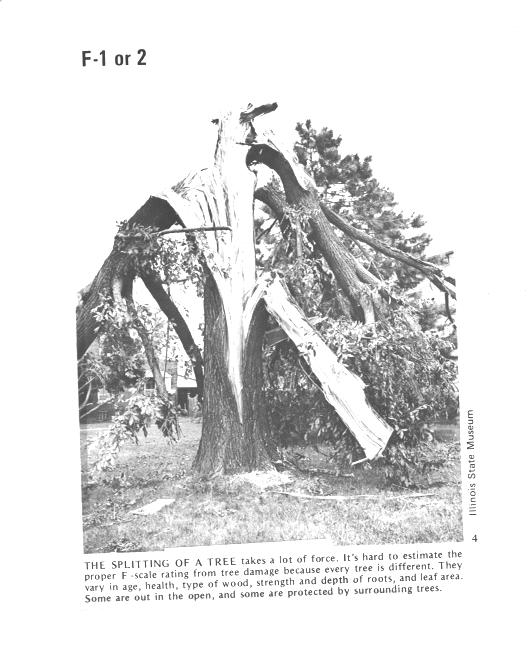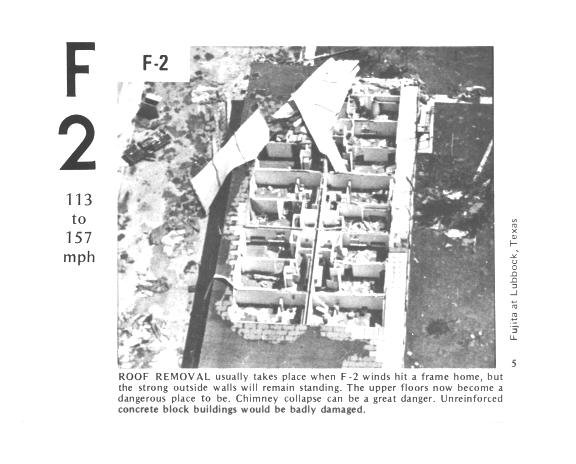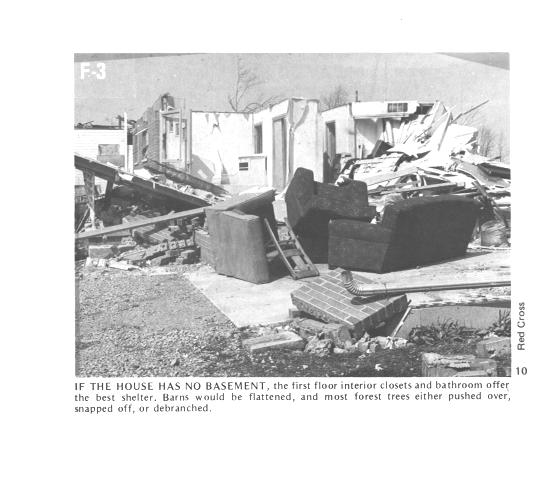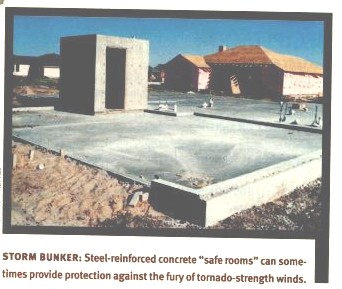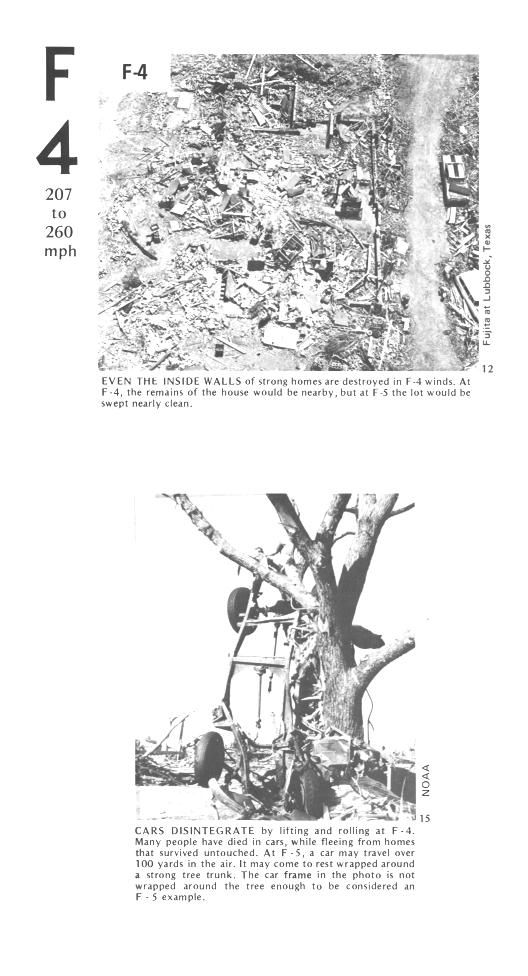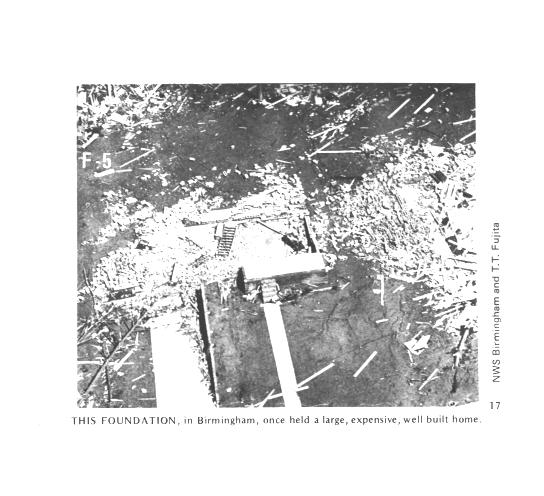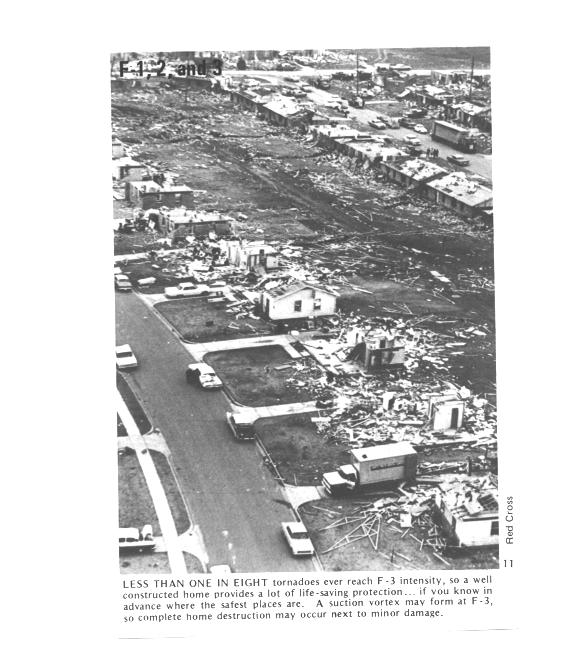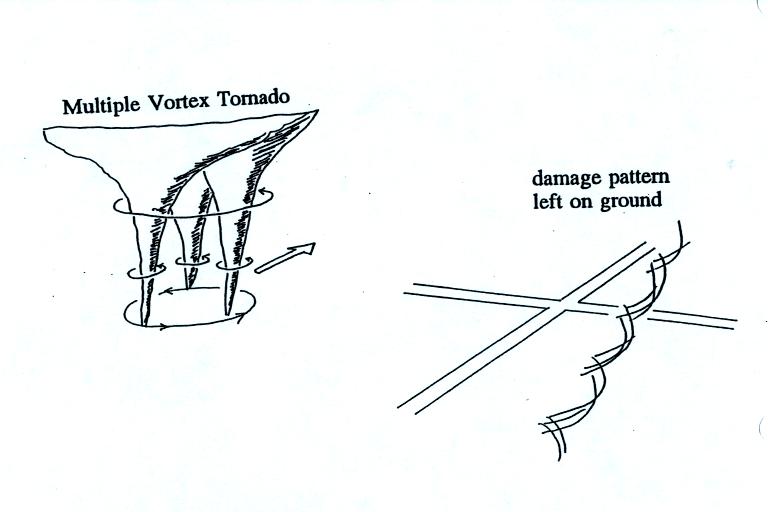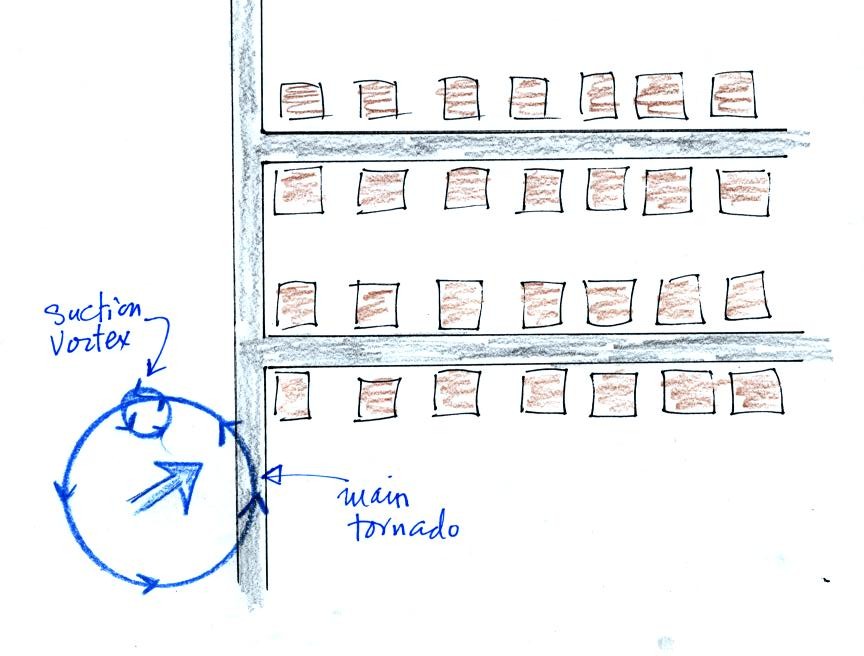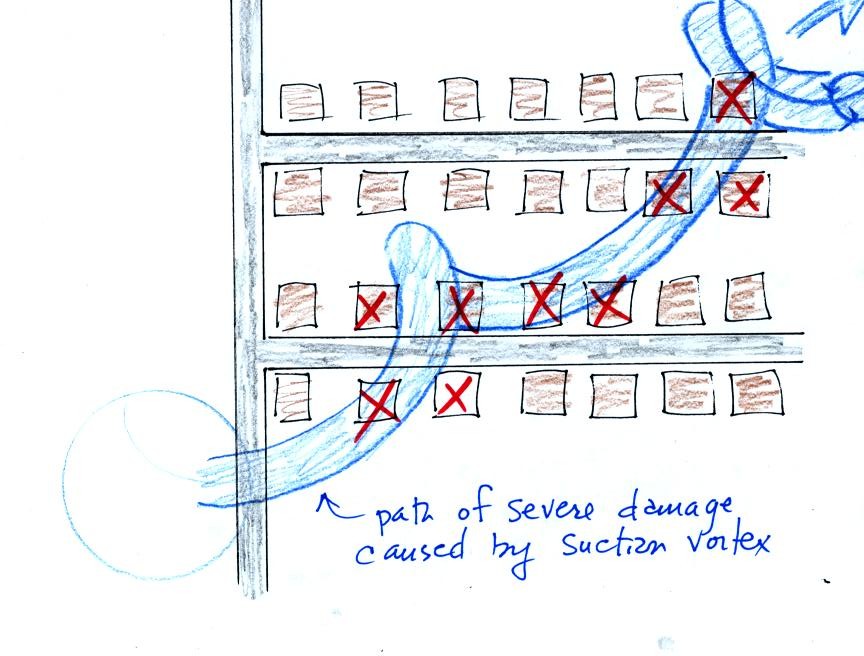
The
homes
marked
in red would be damaged severely. The others
would receive less damage. Remember that there are multiple
suction vortices in the tornado, but the tornado diameter is probably
larger than shown here.
Air motions inside tornadoes are
complex and difficult to study directly. Researchers resort to
laboratory simulations and computer models. The figures below
show some of the air motions thought to occur in tornadoes.
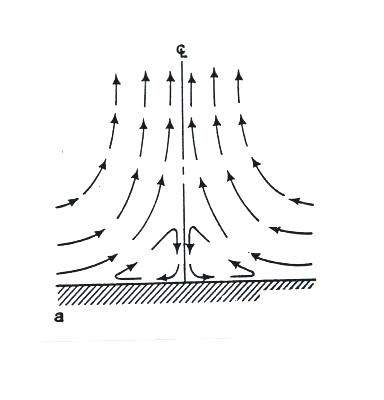
Wind motions in a fairly weak
tornado. The winds would also be spinning in addition
moving upward as
shown here.
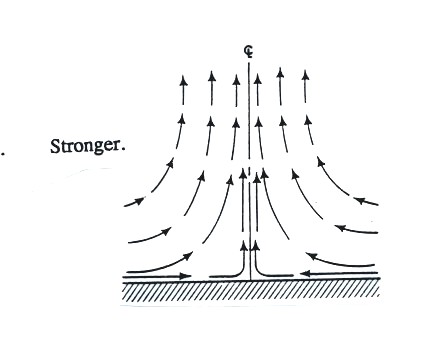
This tornado is a little stronger.
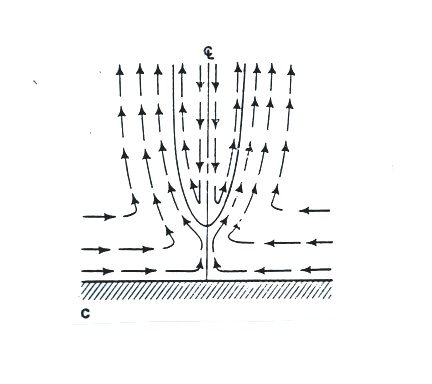
This tornado is even
stronger. The air in the center has started to sink (this is
called vortex breakdown), but the sinking air doesn't reach the
ground. The diameter of the tornado has also grown.
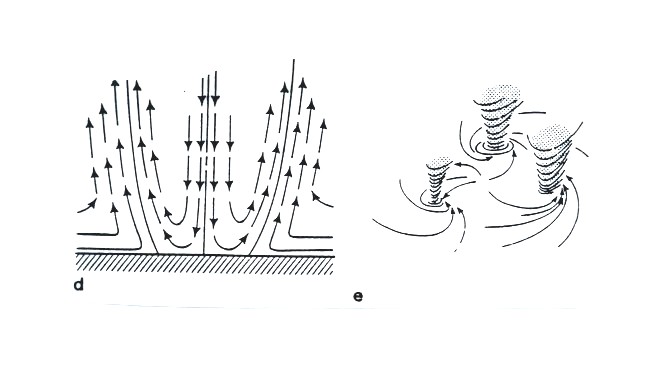
It is when the sinking air in the
middle reaches the ground that multiple vortices may form.
At
this point we watched the last of the tornado video tapes. It
showed a tornado that occurred in Pampa, Texas (here are a couple of
videos that I found on YouTube: video 1, video 2, they're
missing the commentary that was on the video shown in class).
Near the end of
the segment, video photography showed several vehicles (pick up trucks
and a van) that had been lifted 100 feet or so off the ground and were
being thrown around at 80 or 90 MPH by the tornado
winds. Winds speeds of about 250 MPH were estimated from the
video photography (the wind speeds were measured above the ground and
might not have extended all the way to the ground).
